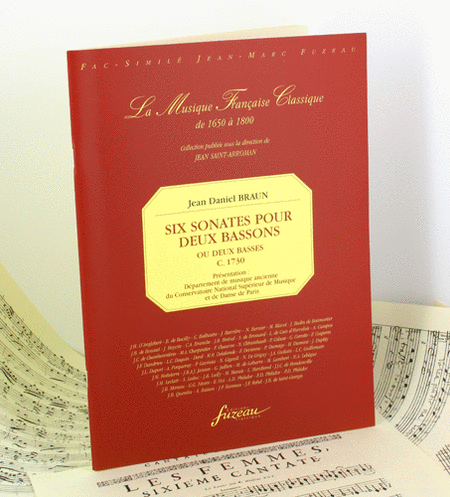Johann Sebastian Bach (1685 – 1750) was a German
composer, organist, harpsichordist, violist, and
violinist of the Baroque period. He enriched many
established German styles through his skill in
counterpoint, harmonic and motivic organisation, and
the adaptation of rhythms, forms, and textures from
abroad, particularly from Italy and France. Bach's
compositions include the Brandenburg Concertos, the
Mass in B minor, the The Well-Tempered Clavier, his
cantatas, chorales, partitas, Passions, and...(+)
Johann Sebastian Bach (1685 – 1750) was a German
composer, organist, harpsichordist, violist, and
violinist of the Baroque period. He enriched many
established German styles through his skill in
counterpoint, harmonic and motivic organisation, and
the adaptation of rhythms, forms, and textures from
abroad, particularly from Italy and France. Bach's
compositions include the Brandenburg Concertos, the
Mass in B minor, the The Well-Tempered Clavier, his
cantatas, chorales, partitas, Passions, and organ
works. His music is revered for its intellectual depth,
technical command, and artistic beauty.
Composed for the Feast of the Visitation of the Blessed
Virgin Mary, celebrated on July 2, Bach's Cantata No.
10 "Meine Sell erhebt den Herren" (My soul doth magnify
the Lord) (BWV 10) sets not a Protestant hymn as nearly
all his other chorale cantatas do, but instead the
Magnificat, a Marian canticle drawn from Luke 1: 46-55
in the German translation by Martin Luther. The unknown
writer of the cantata text used verses 46 through 48
for the first movement, verse 54 for the fifth
movement, the doxology for the seventh movement, and
adopted and paraphrased the other verses for the
remaining movements. As befits a text centered on the
mother of God and the implied redemption of the sinful
world by her son, the tone of the music is
predominantly joyful. The cantata is scored for
soprano, tenor, bass and alto soloists, chorus, and
trumpet, plus a pair of oboes, strings, and basso
continuo. The cantata is in shining G minor with its
first, third, and sixth movements in the tonic, but
with a hopeful Picardy third at the end of the outer
movements, its second movement in B flat major, its
fourth in F major, and its fifth in D minor. The first
movement opens with a massive and muscular sinfonia for
the full orchestra, with the chorus entering after 12
bars with resounding statements of the hymn's first
three verses. The second movement is nearly as
powerful, with the strings, oboes, and continuo
providing a strong instrumental backdrop for the
soaring soprano soloist. The third movement is a
dark-hued recitative for tenor soloist and continuo.
The fourth movement is a propulsive aria for strapping
bass soloist and a brawny organ continuo. The fifth
movement is a sorrowful duet for tenor and alto
soloists, with the oboes and trumpet declaiming the
hymn tune above the subdued accompaniment. The sixth
movement is a brief, unaccompanied tenor recitative
followed by an only slightly more-expansive Andante for
tenor, strings, and continuo. "Meine Seel erhebt den
Herren" ends with a fully scored harmonization of the
last lines of the hymn for the entire chorus and
orchestra.
Although the Aria "Gewaltige stößt Gott vom Stuhl"
("The mighty God casts from their thrones") was
originally composed for bass voice and continuo, I
created this arrangement for Bassoon duet. |

 SHEET MUSIC
SHEET MUSIC
 SHEET MUSIC
SHEET MUSIC
 SHEET MUSIC
SHEET MUSIC















 Mike Magatagan's Arrangements
Mike Magatagan's Arrangements